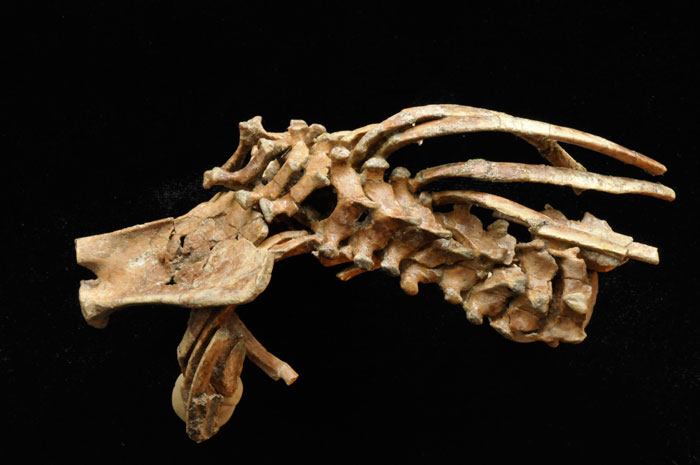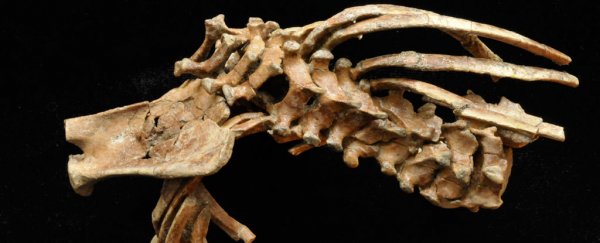Recent analysis of a 3.3-million-year-old hominin fossil found back in 2000 has provided researchers with the most complete spinal column of any early human relative - and gives us a unique snapshot of a crucial transition point as our early ancestors evolved towards bipedalism.
According to the results of the analysis, key segments of the spinal structure that allowed us humans to walk upright emerged millions of years earlier than we thought, and it sheds new light on one of the "hallmarks" of human evolution.
The bones in question - called Selam - were discovered in Dikika, Ethiopia, by University of Chicago paleoanthropologist Zeresenay Alemseged on a research expedition.
Alemseged has studied these ancient remains ever since, which are notable not only for their completeness, but for Selam's age of death - she was just 2.5 years old, making her the earliest and most complete juvenile human ancestor ever discovered.
And now, new research has identified these bones as the oldest evidence of when early humans began to walk on two feet.
 Zeresenay Alemseged/University of Chicago
Zeresenay Alemseged/University of Chicago
"Continued and painstaking research on Selam shows that the general structure of the human spinal column emerged over 3.3 million years ago, shedding light on one of the hallmarks of human evolution," says Alemseged.
"This type of preservation is unprecedented, particularly in a young individual whose vertebrae are not yet fully fused."
Selam is a member of Australopithecus afarensis - the same early hominin species as Lucy, the famous fossil discovered in the 1970s.
In fact, Selam (which means "peace" in the Amharic language of Ethiopia) has often been nicknamed 'Lucy's baby', although dating of the fossils suggests that Selam predates her 'mother' by some 120,000 years.
Since discovering Selam in 2000, Alemseged's team has analysed the ancient bones, chipping away at the sandstone surrounding the skeleton, and for the latest study, using imaging technology at the European Synchrotron Radiation Facility in France to visualise missing parts of the bone structure.
"This technology provides the opportunity to virtually examine aspects of the vertebrae otherwise unattainable from the original specimen," says one of the team, evolutionary anatomist Fred Spoor from University College London.
 Zeresenay Alemseged/University of Chicago
Zeresenay Alemseged/University of Chicago
In doing so, the researchers found that Selam's spinal structure occupies something of a halfway point between living humans and other ancient predecessors.
Like us, Selam had only 12 thoracic vertebrae and 12 pairs of ribs, whereas most apes have more of these. In contrast, humans have more vertebrae in the lower back, which help us to stand and walk upright.
But Selam's spinal structure also exhibits a thoracic-to-lumbar joint transition that other early human ancestors had - the first time researchers have seen this in conjunction with the same vertebrae count of modern humans.
"For many years we have known of fragmentary remains of early fossil species that suggest that the shift from rib-bearing, or thoracic, vertebrae to lumbar, or lower back, vertebrae was positioned higher in the spinal column than in living humans," says one of the team, Carol Ward from the University of Missouri.
"But we have not been able to determine how many vertebrae our early ancestors had. Selam has provided us the first glimpse into how our early ancestors' spines were organised."
Calling Selam's spine an "unusual early human configuration", the team says it's an important piece of evidence that helps further explain how early primates developed towards the upright walking ability we all enjoy today.
"We are documenting for the first time in the fossil record the emergence of the number of the vertebrae in our history, when the transition happened from the rib-bearing vertebrae to lower back vertebrae, and when we started to extend the waist," says Alemseged.
"This structure and its modification through time is one of the key events in the history of human evolution."
The findings are reported in Proceedings of the National Academy of Sciences.
